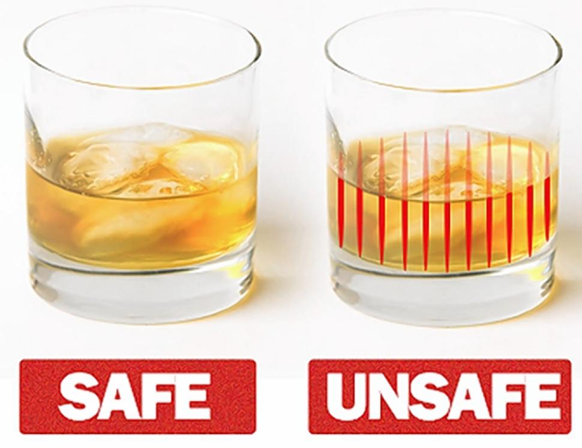It’s summer,
which means sun, school break, and — if you’re a parent — probably a lot of
TikTok in your teenager’s daily routine. But while some trends are harmless
dance challenges or funny filters, others can be dangerous. One of the latest
to go viral? The “tan lines trend”.
What
Is the “Tan Lines Trend”?
This trend
encourages teens to tan under extremely high UV conditions just to get
visible tan lines — all for looks. Many teens are now using weather apps and UV
trackers to find the time of day when the sun’s rays are strongest, aiming for
a deeper, faster tan. Some TikTok users have even recorded themselves tanning
during UV index levels of 13, which is considered extremely dangerous.
Why
This Trend Is So Concerning
This tanning
obsession comes with serious health risks. Here’s what everyone should
understand:
·
UV rays cause skin damage. They don’t just give you a tan — they damage DNA, age the skin
prematurely, and can lead to skin cancer.
·
Sunburns are not just burns. They’re signs that your skin has been overwhelmed by UV radiation,
triggering inflammation and long-term harm.
·
Teens are especially vulnerable. Because sun damage accumulates over time, habits formed now can lead to
serious consequences later.
Understanding
UV Radiation
Ultraviolet (UV)
radiation comes from the sun, and the two main types that affect our health are
UV-A and UV-B:
·
UV-A: Penetrates deep
into the skin and contributes to aging and wrinkles.
·
UV-B: Responsible for
sunburn and direct DNA damage that can lead to skin cancer.
The EPA’s UV
Index helps you track UV levels in your area (by zip code or current
location). The scale goes from 1 (Low) to 11+ (Extreme). Anything above 6
means you need to take serious precautions if you're spending time outside.
Common
Myths About Tanning
Let’s clear up
some quick misconceptions:
🚫 “A
base tan protects me.” False. A tan is already a sign of skin damage.
🚫 “You
can’t get sunburned on a cloudy day.” False. Up to 80% of UV rays still
reach your skin on overcast days.
🚫 “Only
fair-skinned people need sunscreen.” Also, false. All skin types can
experience sun damage and skin cancer.
What
a Sunburn Actually Does to Your Body
Sunburn is more
than just red, painful skin. It’s your body’s alarm bell.
When your skin
gets too much UV exposure, your body increases blood flow to the area to repair
damaged cells. This causes swelling, redness, blistering, and peeling. Over
time, this damage adds up and increases your risk of:
·
Melanoma
·
Basal cell carcinoma
·
Squamous cell carcinoma
These are three
of the most common skin cancers — all linked to UV radiation.
How
to Protect Yourself (and Your Teen)
Good news:
protecting your skin is easy with a few daily habits.
✅ Choose the
Right Sunscreen:
·
Use broad-spectrum SPF 30 or higher
·
Reapply every two hours (more often if swimming or sweating)
·
Look for mineral sunscreens (like zinc oxide or titanium dioxide)
if you have sensitive skin
🧢 Dress
Smart:
·
Wear long sleeves, hats, and UV-blocking sunglasses
·
Stick to the shade, especially between 10 a.m. and 2 p.m.
⏰ Set Reminders:
·
Use a phone timer to remind yourself or your teen to reapply sunscreen
·
Encourage checking the EPA UV Index each morning before outdoor
plans
A
Final Word for Parents and Teens
There’s nothing
wrong with wanting to look good or feel confident — but there’s nothing
healthy about chasing tan lines under extreme sun exposure. Skin damage is
cumulative, permanent, and preventable. Teaching sun safety now lays the
foundation for lifelong skin health.
So, let’s raise
awareness, bust some myths, and maybe even make sunscreen the next TikTok
trend. Because nothing looks better than healthy, protected skin — no
filter required.
Meet the Texas Panhandle Poison Center: Science That Saves Lives
Ever wonder who’s on the other end of the line when you call
a poison helpline? In the Texas Panhandle, it’s the experts at the Texas
Panhandle Poison Center (TPPC) — a team of science-based professionals
working 24/7 to keep people safe.
Part of Texas Tech University Health Sciences Center
in Amarillo, TPPC has been helping Texans since 1994 by providing
fast, accurate info when it comes to poison exposures. Whether it’s a curious
toddler who got into the cleaning supplies or a medication mix-up, TPPC’s
trained nurses and pharmacists (called Poison Information Specialists)
are just a call away at 1-800-222-1222.
TPPC covers a huge area — 71 counties in
northwest Texas, serving more than 1.4 million people. And they
don’t just answer emergency calls. They also run science-based outreach
programs in schools and communities to help prevent poisonings before they
happen.
One of their coolest projects? Medication Cleanout™
(MCO) — a nationally recognized take-back program that helps people
safely dispose of old or unused meds. It keeps harmful drugs out of the wrong
hands and out of the environment. Since 2009, TPPC has collected over 55,000
pounds of medication through these events!
So, if you're into science, health, or public safety, TPPC
is a real-world example of how STEM careers make a direct impact. Whether it's
research, outreach, or emergency response, this team is all about using
knowledge to protect people and the planet.
%20radiation%20comes%20from%20the%20sun,%20and%20the%20two%20main%20types%20that%20affect%20our%20health%20are%20UV-A%20and%20UV-B__%E2%80%A2_UV-A_%20Penetrates%20deep%20into%20the%20skin%20and%20contributes%20to%20aging%20and%20wrinkles._%E2%80%A2_UV-B_%20Responsible%20fo.jpg)

_%E2%80%A2_Look%20for%20mine.jpg)











_%E2%80%A2_Orange%20veggies%20(such%20as%20carrots%20and%20sweet%20potatoe.jpg)












